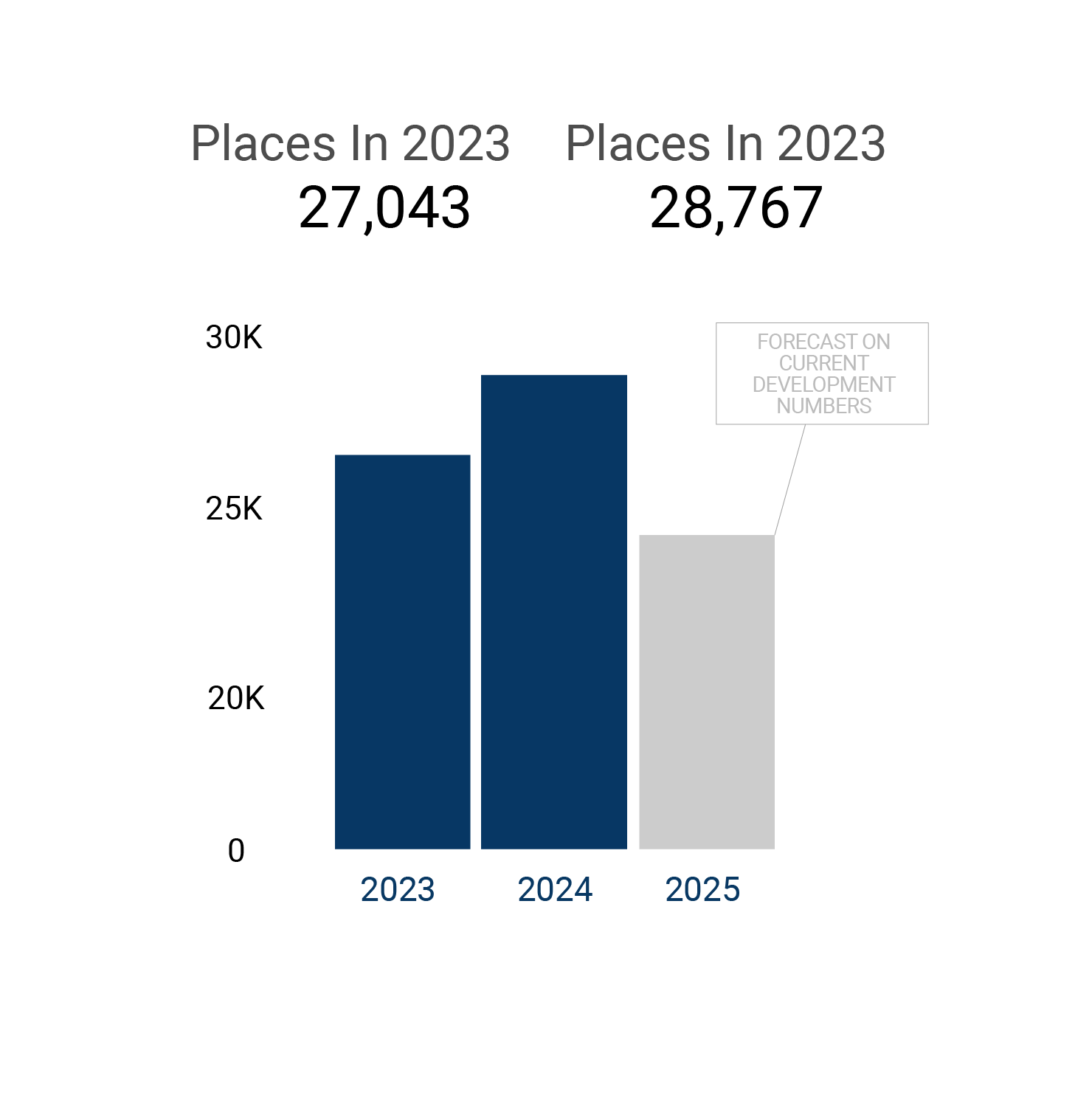)
The Industry's Response to Increasing Demand for Childcare
Introduction
The childcare industry is at a pivotal moment as it confronts an unprecedented surge in demand. This increase is driven by multiple factors, including higher workforce participation rates among parents and an increased recognition of early childhood education's value. As a result, the industry is dynamically adapting to meet these needs through the expansion of childcare centres, adherence to stringent quality standards, and necessary adjustments in pricing structures. This article delves into how the childcare industry is responding to this increasing demand, providing insights into current trends, future projections, and the implications for parents, providers, and policymakers.
Expansion of Childcare Centres
The expansion of childcare centres is one of the most visible responses to the increasing demand. In 2023, the number of childcare centres across the nation reached 9,200, with an annual growth rate of 300 to 400 new centres. This expansion is essential to accommodate the rising number of children needing care and to alleviate the pressure on existing facilities. The growth is not just in terms of quantity but also quality, with new centres often featuring state-of-the-art facilities and comprehensive educational programs.
The consistent opening of new centres each year is a clear indication of the industry's commitment to addressing the demand. This growth trajectory is supported by both public and private investments, with significant funding allocated to building and renovating childcare facilities. These investments are crucial for ensuring that new centres meet the high standards required for early childhood education and care.
9200

National Quality Standards
Australia's childcare industry is renowned for its rigorous quality standards, which are among the highest globally. The National Quality Framework (NQF) sets a high benchmark for educational programs, health and safety, physical environment, and staff qualifications. This framework ensures that children receive high-quality care and education, which is crucial for their development and well-being.
The NQF includes the National Quality Standard (NQS), which evaluates childcare services against seven quality areas, including educational program and practice, children's health and safety, and physical environment. This assessment process ensures that services are continuously improving and striving for excellence. Providers are regularly monitored and rated, fostering a culture of accountability and high performance.
Projected Future Places
The childcare industry's proactive expansion efforts are also reflected in the projected increase in available childcare places. In 2023, there were 27,043 places, with projections indicating a rise to 28,767 in 2024 and 22,980 in 2025. These projections are based on current trends and planned expansions, illustrating a strategic response to anticipated demand.
These projections also highlight the need for sustained investment and policy support to ensure that the industry can meet future demand. The slight drop in projected places for 2025 may indicate a need for further planning and resource allocation to avoid potential shortfalls. Nonetheless, the overall trend is positive, reflecting a strong response to the increasing need for childcare services.

Average Hourly Fee Increase
The financial aspect of childcare has seen significant changes over the years. From 2012 to 2021, average hourly fees increased by 49%, reflecting the rising costs of providing high-quality care and education. This increase is attributed to several factors, including higher wages for qualified staff, improved facilities, and enhanced educational resources.
While the fee increase poses a challenge for many families, it also reflects the industry's commitment to maintaining high standards. Higher fees often translate to better staff-to-child ratios, more comprehensive educational programs, and safer, more stimulating environments for children. However, this financial burden highlights the need for policies that support affordability and access, ensuring that all families can benefit from high-quality childcare.

Conclusion
The childcare industry's response to increasing demand is multifaceted and proactive. The expansion of childcare centres, adherence to stringent quality standards, and necessary adjustments in pricing structures demonstrate a commitment to meeting the needs of families and supporting children's development. These efforts highlight the potential for continued growth and investment opportunities in the sector. As demand continues to rise, the industry's ability to adapt and innovate will be crucial for ensuring that all children have access to high-quality care and education.
FAQs
What are the main factors driving the increasing demand for childcare services?
The main factors include higher workforce participation rates among parents, greater recognition of the importance of early childhood education, and demographic trends such as population growth.
How is the quality of childcare services ensured in Australia?
Australia's National Quality Framework (NQF) and National Quality Standard (NQS) set rigorous benchmarks for educational programs, health and safety, physical environment, and staff qualifications. Services are regularly monitored and rated to ensure high standards.
What are the projected future places for childcare?
In 2023, there were 27,043 places, with projections of 28,767 in 2024 and 22,980 in 2025, reflecting ongoing expansion efforts.
How have childcare fees changed over the years?
From 2012 to 2021, average hourly fees increased by 49%, due to higher costs associated with maintaining high-quality care and education.
Why is there a need for investment in the childcare industry?
Investment is necessary to support the expansion of childcare centres, maintain high-quality standards, and ensure affordability and access for all families.
What are the potential opportunities for growth in the childcare industry?
The increasing demand for childcare services presents opportunities for expansion, innovation in service delivery, and investment in new facilities and educational programs.

)
)
)
)
)
)
)
)
)
)
)
)
